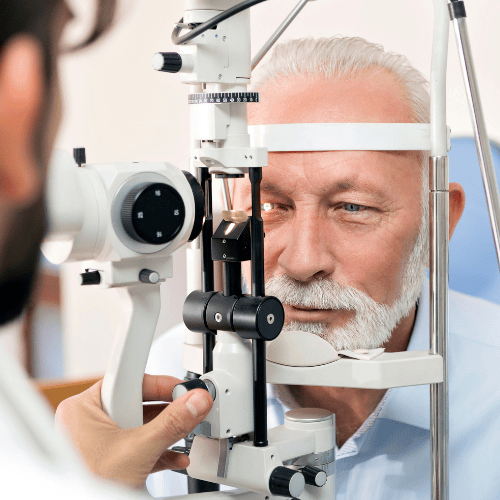Eye-related side effects from prescription drugs
You will have noticed, if you’ve been in for an eye exam recently at MVO, that our optometrists always ask you for an updated list of any prescription medications you are taking. This is because many of these medications may have unwanted effects that you may have noticed or that we might uncover during your exam.
Here is a description of the most commonly prescribed medications and their potential side effects on your eyes or vision.
Cholesterol medications
High blood cholesterol can cause heart disease, stroke, and even death. About one in eight people are at risk, making cholesterol-lowering drugs (“statins”) among the most commonly prescribed medications. Examples are Lipitor, Zocor, Pravachol and Crestor.
Two eye-related problems – double vision and droopy eyelid – are possible with the use of statins. These conditions, once the medication has stopped, generally will disappear without the need for treatment. It’s not very common that we will diagnose such effects that can be traced to statin use.
Drugs for depression and mental illness
More and more people (at increasingly younger ages), are being diagnosed with depression and mental illness. Drugs to treat depression include Celexa, Cymbalta, Prozac and Wellbutrin. Mental illness is treated with medication such as Seroquel, Resperidol and Mellaril.
Blurred vision and increased light sensitivity are commonly reported with these types of drugs, as well as dry eyes. If one of our patients suddenly finds that they cannot comfortably wear their contact lenses we will normally ask whether they are using one of these types of medications. With modern treatments for dry eye, we are usually able to help these folks without asking their doctor to remove them from their medications.
Pain medications
Vicodin, Percocet (Oxycodone) and Neurontin are types of medications that are frequently prescribed for pain management. Distorted or blurred vision, and double vision have been reported as a result of using these types of drugs.
High blood pressure medication
About two-thirds of people over the age of 65 are on some kind of blood pressure medication. Examples of these drugs include Adalat, Lopressor, Metoprolol, Atenolol and Altace. Dry, red eyes are not uncommon among those taking these types of drugs. Again, we can usually treat these problems with our dry eye treatment strategies.
Thyroid medications
Synthroid is in the top five category of most frequently prescribed drugs. While very uncommon, there have been cases of double vision, droopy eyelids and temporary eye muscle paralysis with the use of Synthroid.
Asthma/respiratory medications
Of the two types of medication normally prescribed for asthma and COPD (chronic obstructive pulmonary disease) those that are steroid-based do have associated risks for eye-related side effects. Steroid inhalers may cause cataracts and glaucoma, as well as prolong the healing time of corneal scratches or abrasions. The dosage and duration of steroid use increase the risk of these side effects.
Arthritis medication
Plaquenil (hydroxychloroquine) has been shown to cause problems in the macula (most sensitive part of the retina) as well as dry eyes. Our patients taking Plaquenil should have their eyes checked every six months to check for the development of any macular disease.
Blood thinners
Coumadin (Warfarin) can cause hemorrhages of the conjunctiva (white part of the eye). These hemorrhages are harmless to the eye and resolve on their own in a couple of weeks.
The risk of side effects must be considered whenever any medication is prescribed. If we suspect that a medication you are taking may be causing a problem with your eyes, our job is to communicate with your prescribing physician. At that point it can be decided if the benefits of taking the medications outweigh any perceived risks. Talk to us if you have any questions or concerns about whether the medications you are taking may cause unwanted side effects in your eyes or your vision.
-Dr. Wilk











